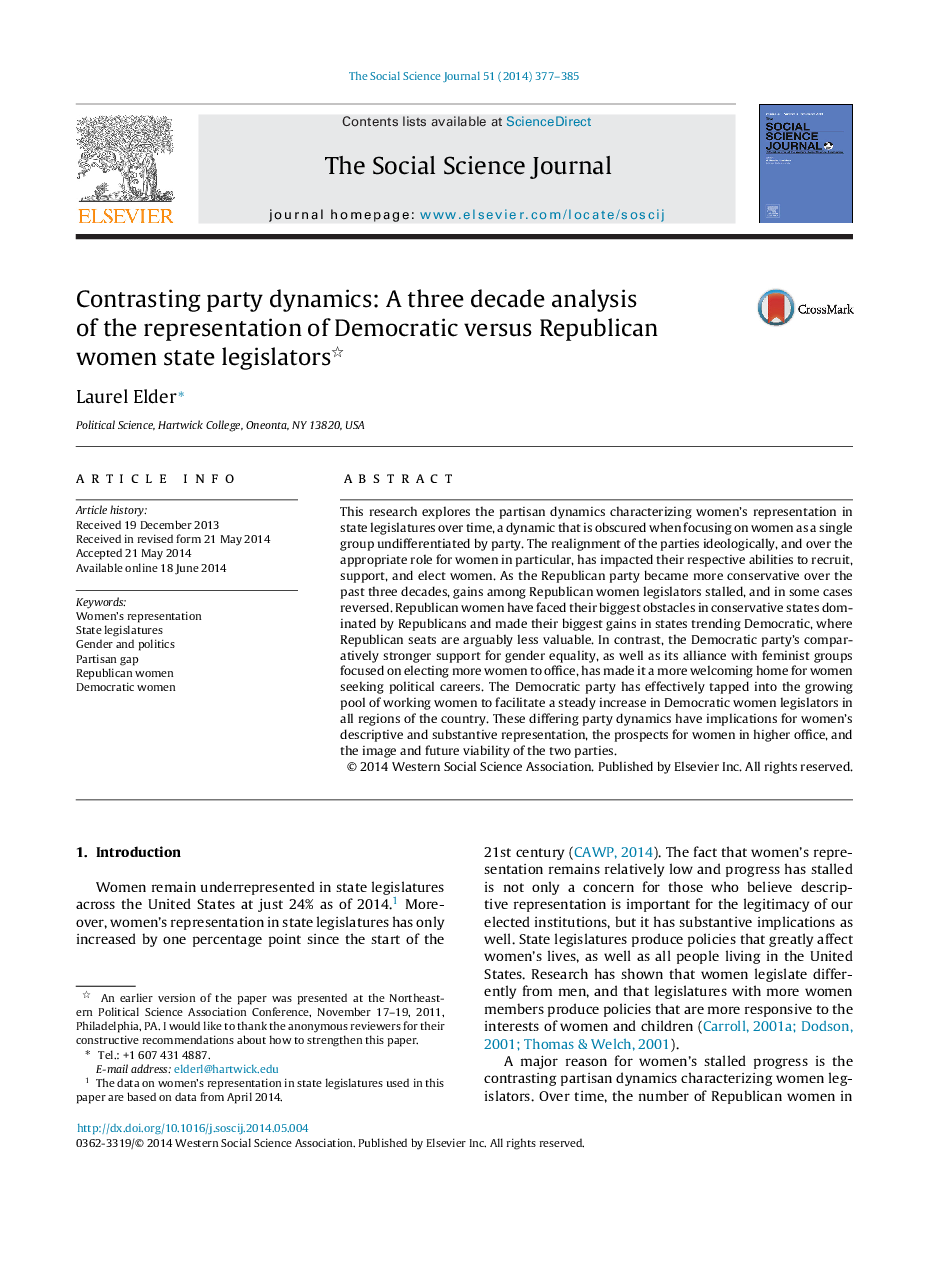| Article ID | Journal | Published Year | Pages | File Type |
|---|---|---|---|---|
| 139990 | The Social Science Journal | 2014 | 9 Pages |
•I compare the growth in the representation of women among Democratic and Republican state legislators from 1981 to 2014.•Their trajectories are markedly different and influenced by different factors.•Democratic women have made robust gains across all regions and states regardless of state ideology and partisanship.•Republican women have made minimal gains and faced their biggest obstacles in Republican and conservative states, where their party yields the most power.
This research explores the partisan dynamics characterizing women's representation in state legislatures over time, a dynamic that is obscured when focusing on women as a single group undifferentiated by party. The realignment of the parties ideologically, and over the appropriate role for women in particular, has impacted their respective abilities to recruit, support, and elect women. As the Republican party became more conservative over the past three decades, gains among Republican women legislators stalled, and in some cases reversed. Republican women have faced their biggest obstacles in conservative states dominated by Republicans and made their biggest gains in states trending Democratic, where Republican seats are arguably less valuable. In contrast, the Democratic party's comparatively stronger support for gender equality, as well as its alliance with feminist groups focused on electing more women to office, has made it a more welcoming home for women seeking political careers. The Democratic party has effectively tapped into the growing pool of working women to facilitate a steady increase in Democratic women legislators in all regions of the country. These differing party dynamics have implications for women's descriptive and substantive representation, the prospects for women in higher office, and the image and future viability of the two parties.
